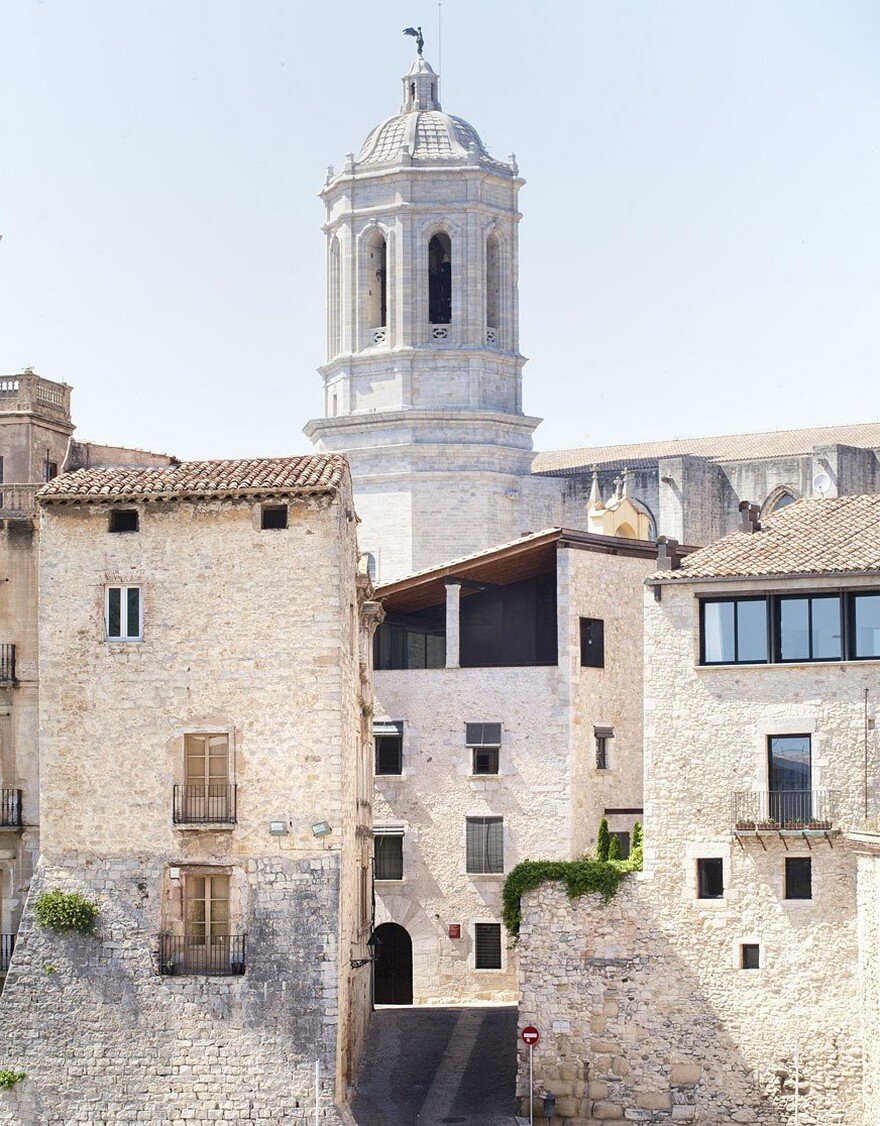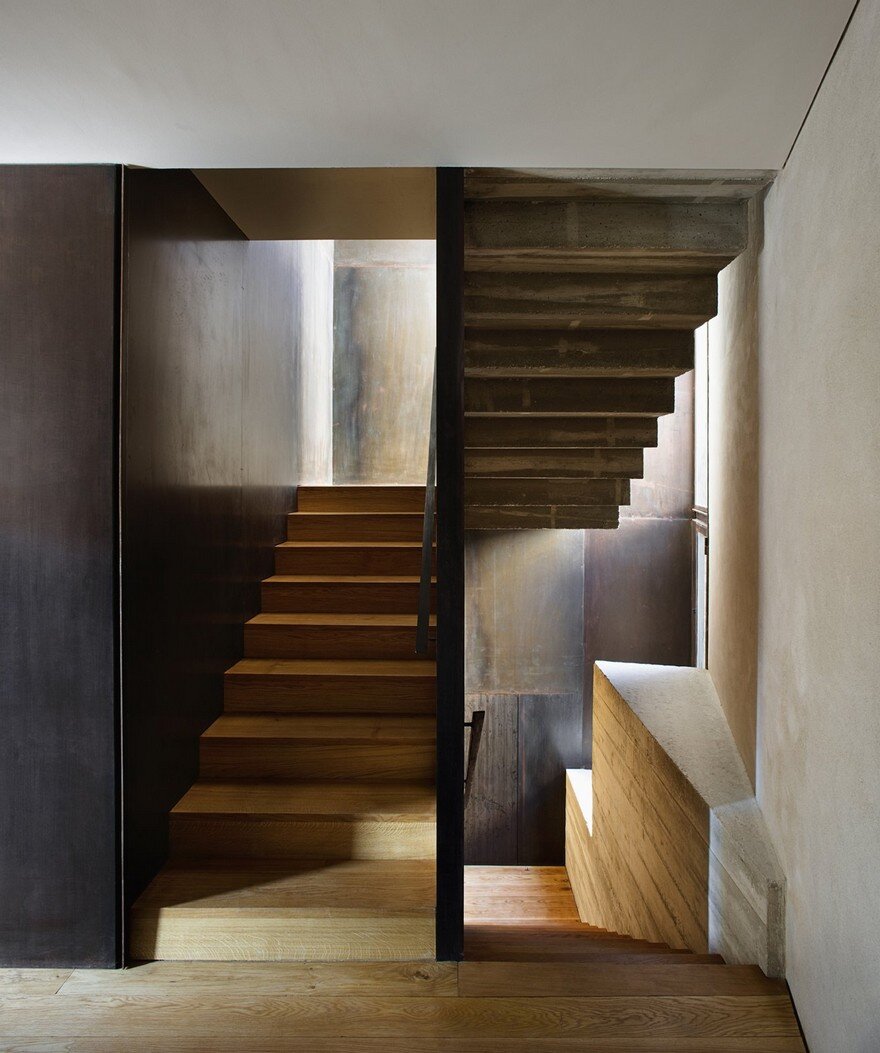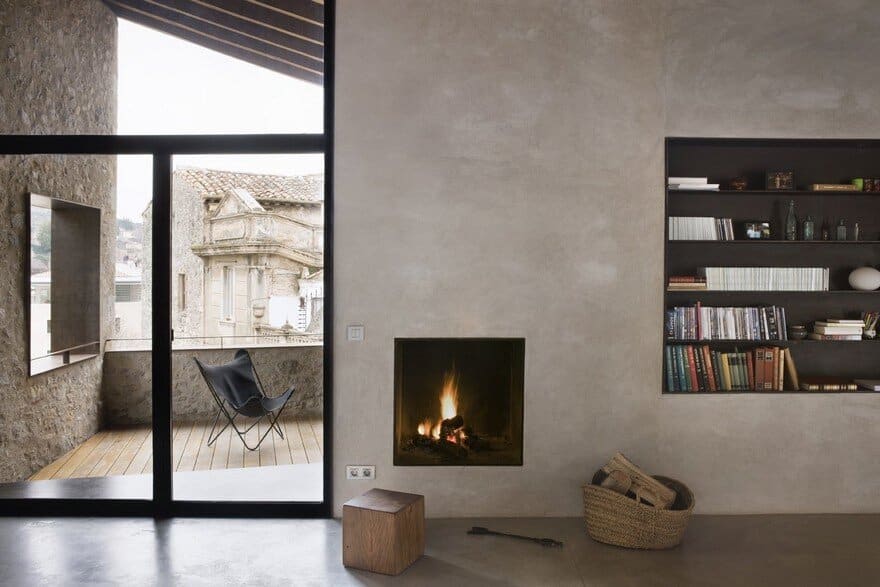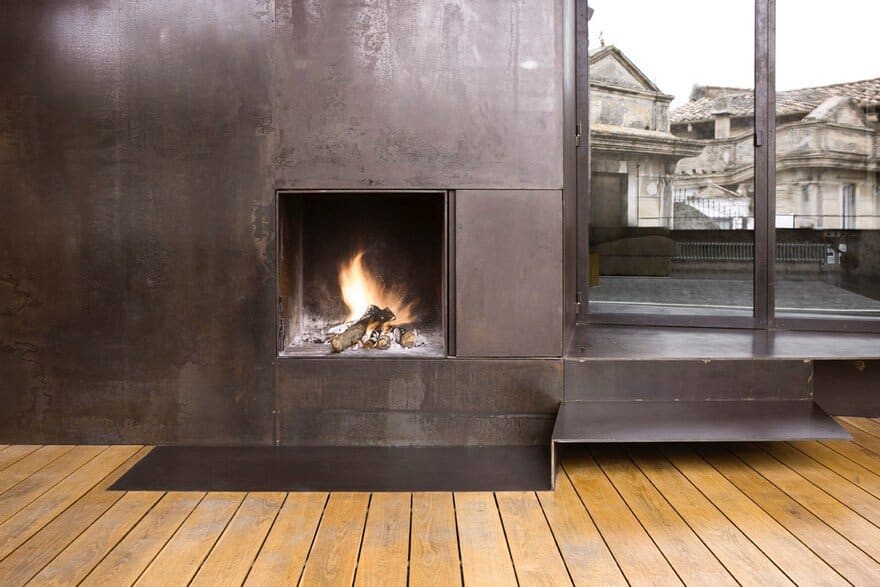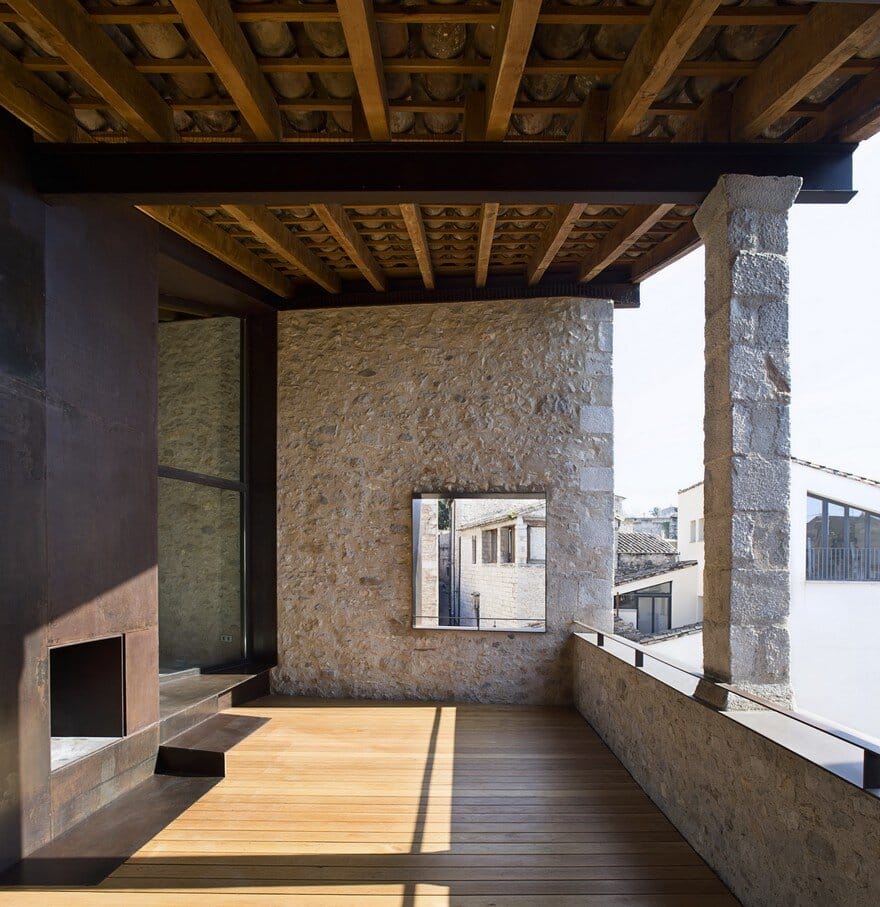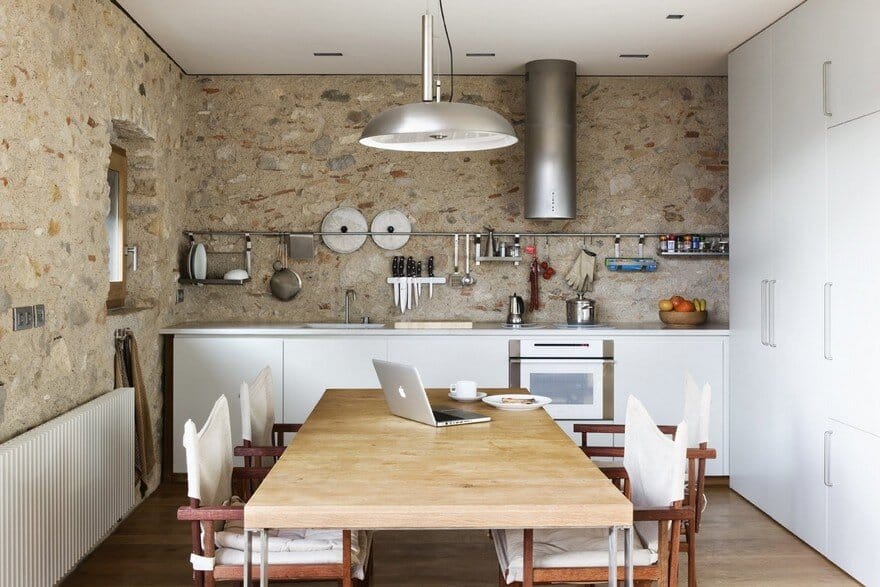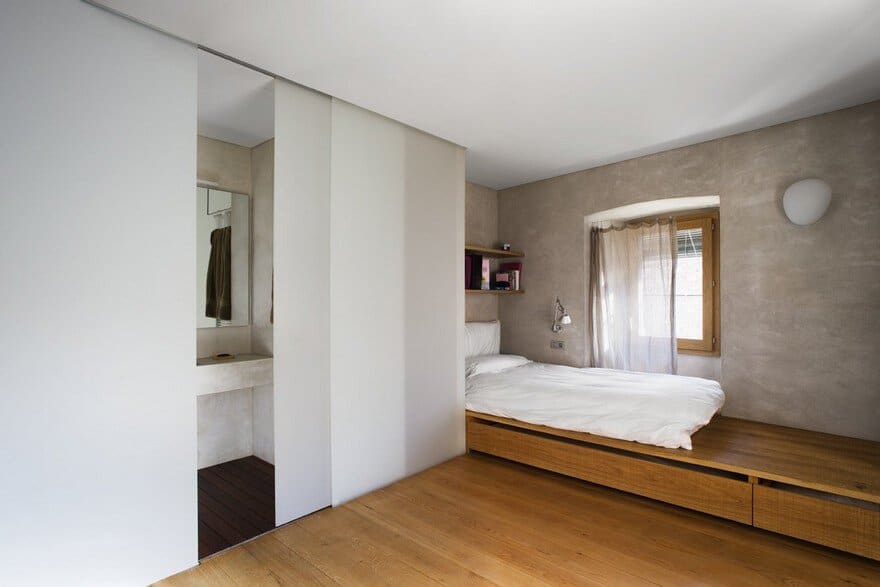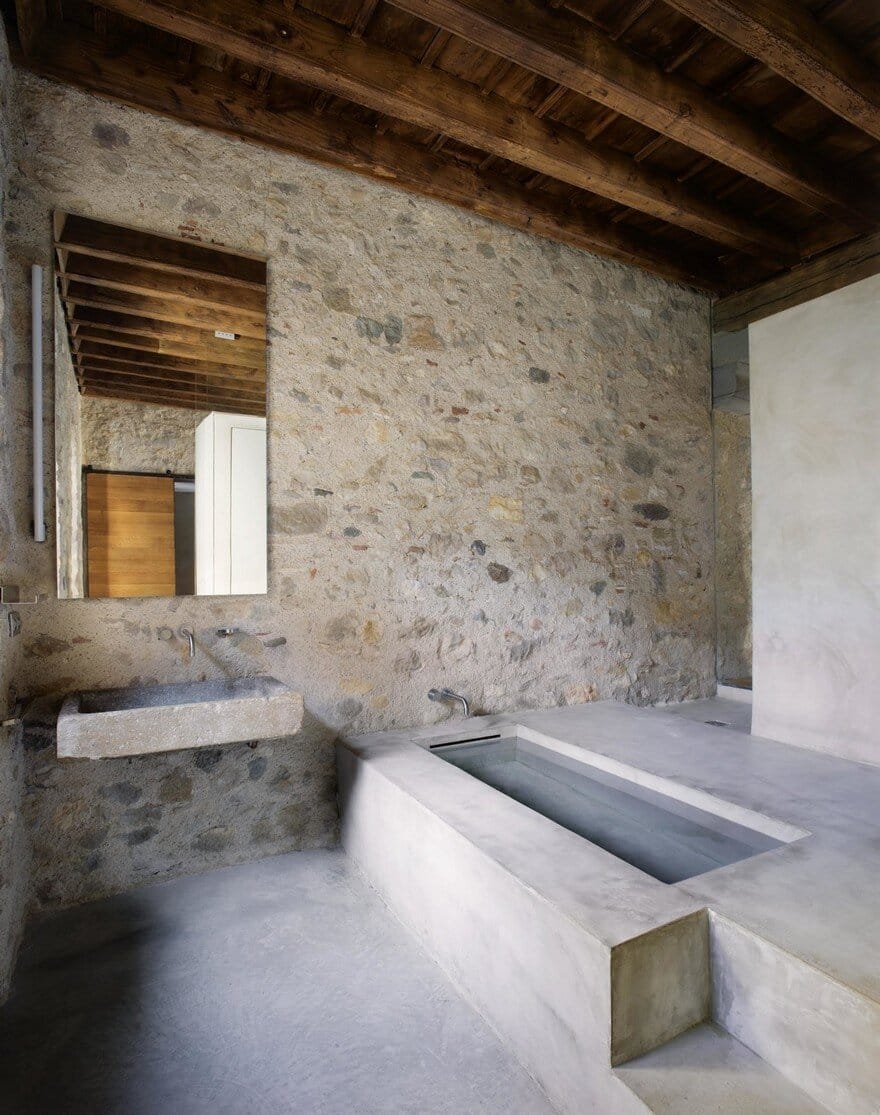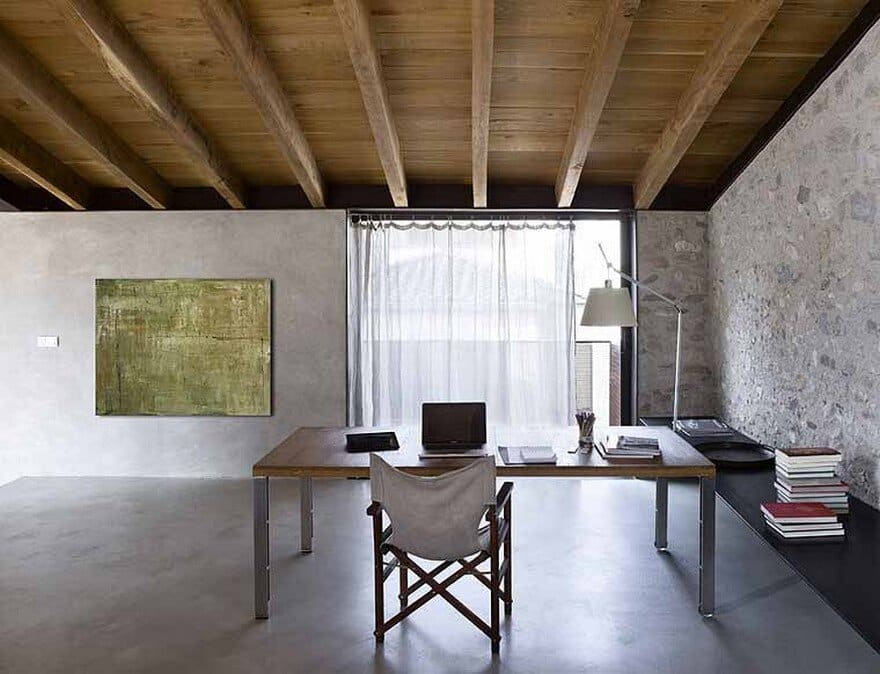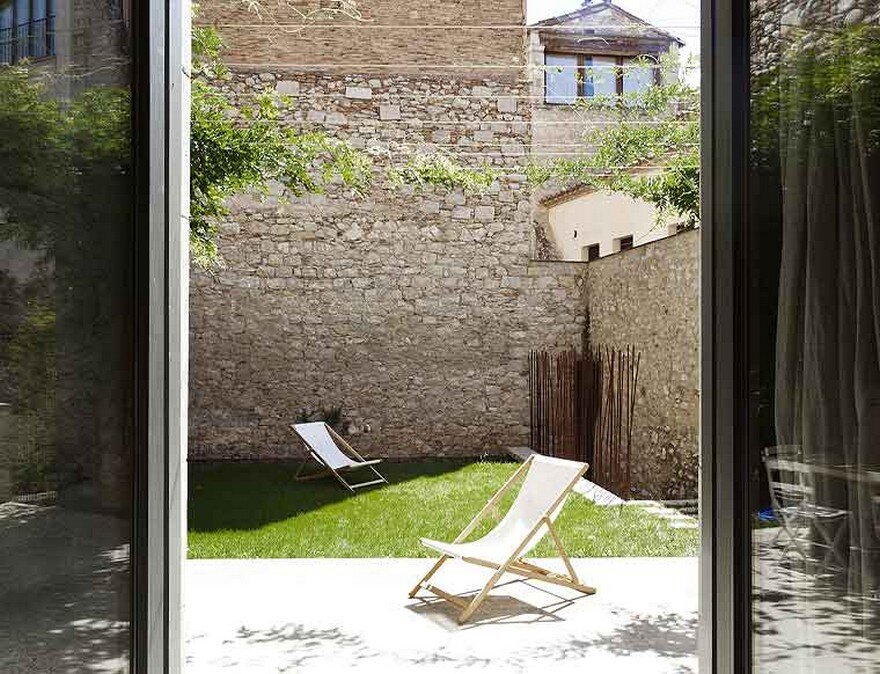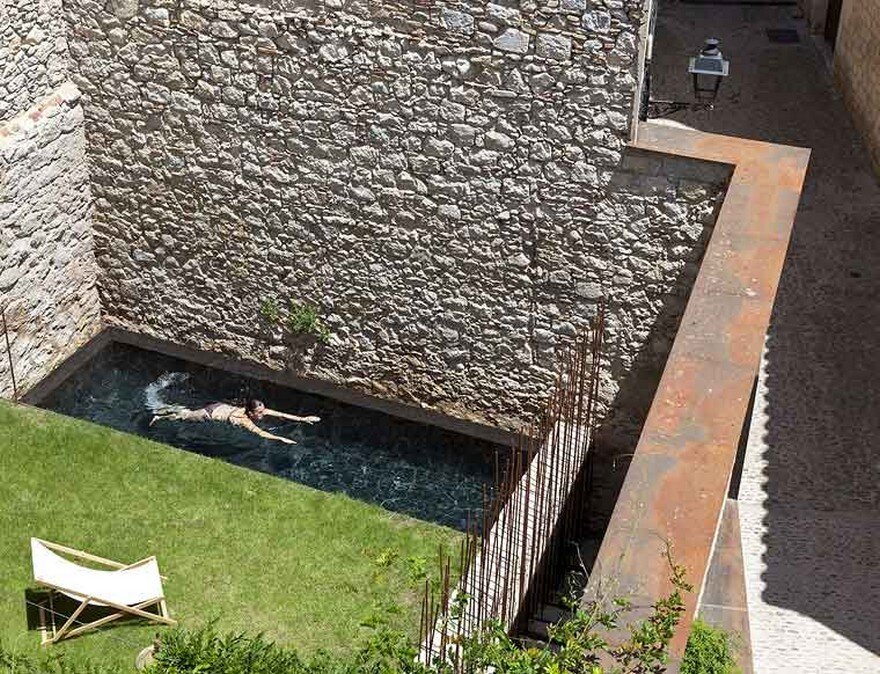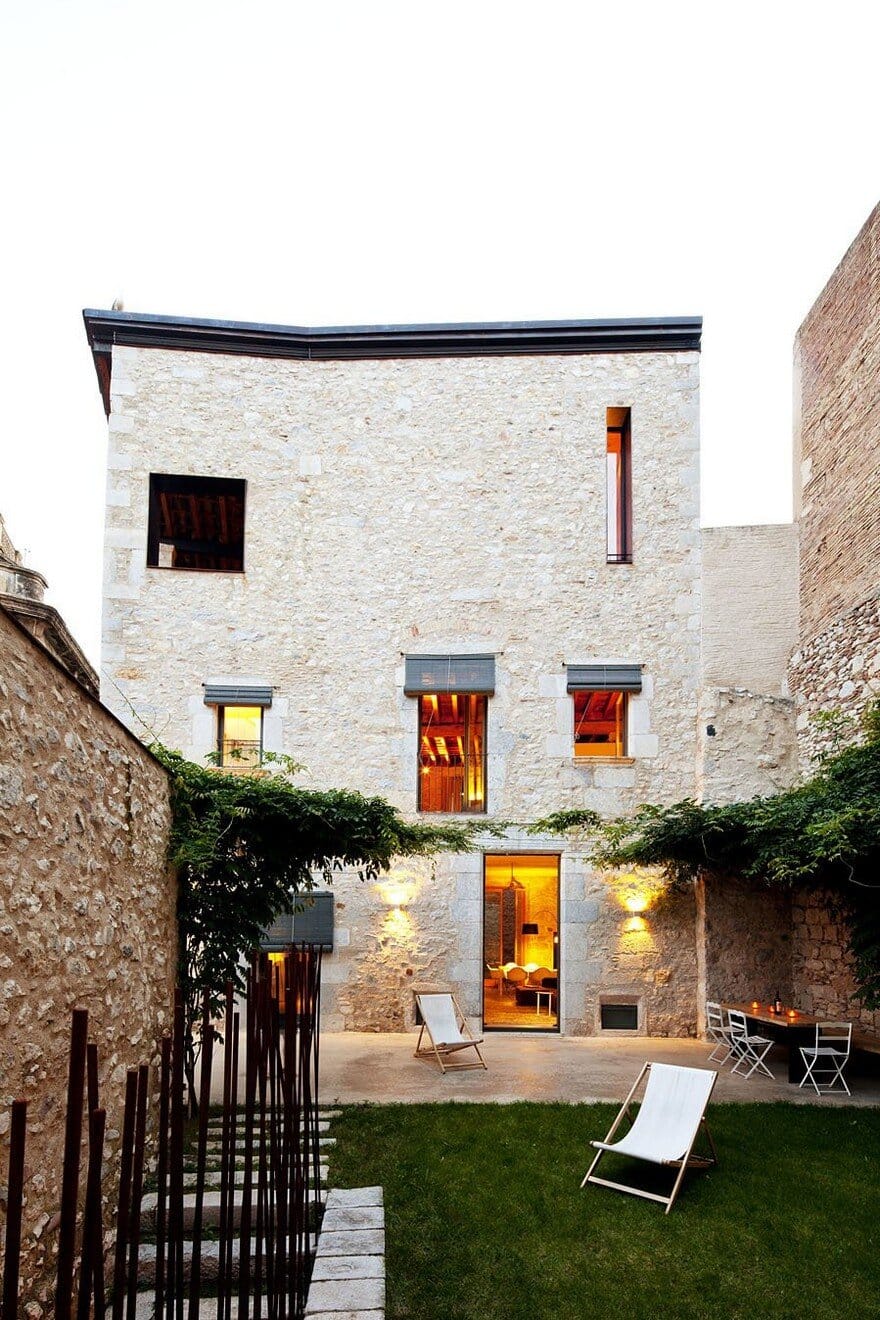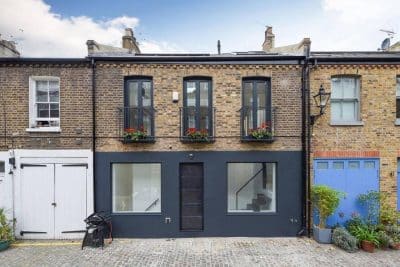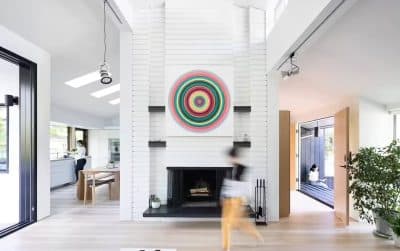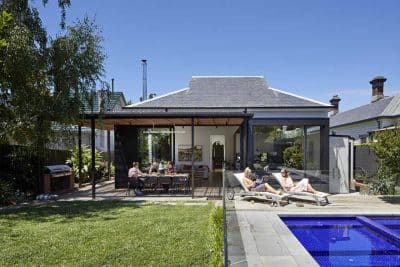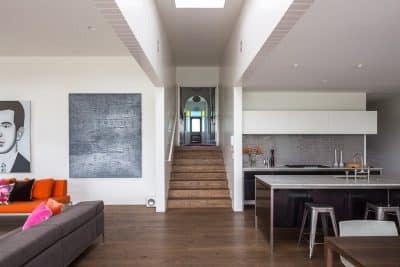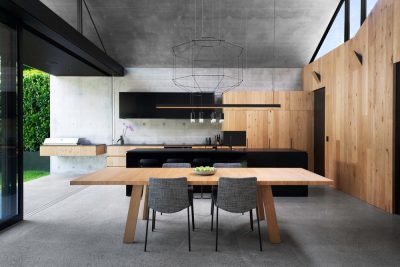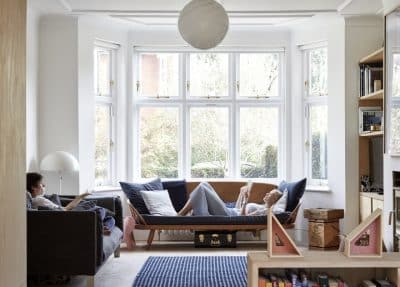Architects: AAN Arquitectura Anna Noguera
Project: Medieval House Renovation
Location: Girona, Catalonia, Spain
Area 180.0 m2
Photography: Anna Noguera
Text by AAN Arquitectura Anna Noguera
The Alemanys house is situated in the oldest part of Girona’s “Barri Vell” (Old District) inside the area of the original city walls. Its location on Alemanys Street is special as it stands opposite one of the oldest gates of the wall, which provides views from the house to the Sant Domènec convent, while from the convent the house can be seen with the Cathedral as a backdrop. Although it is difficult to determine the age of the building structures, the most important alteration dates from the sixteenth century and was carried out by Prior Esteve Arrufat. It later underwent many other reforms and additions that disfigured the original interior distribution.
The reform has been approached as a search for the most intrinsic characteristics of the original construction, and the building has been freed of additions, surface elements and recent reforms, interpreting the old elements not so much through an historical perspective as through their architectural qualities.
The minimalistic style of the redevelopment invokes the austerity of past times. There is a dialogue between the new work and the old medieval house that seeks to marry past and present. The entry of natural light gives form to the volumes, and the fluidity of the spaces is accentuated. These spaces are defined by stone, wood, iron and concrete, used in their natural colours and textures. The colour of oak adds a touch of warmth while the iron elements strike a contrast with the stone and concrete.
The site consists of a built structure and a lateral garden with the façade giving on to the street. Two centrelines structure the building, one giving on to the street and the other on to the interior part of the plot, with crossed façades giving on to the courtyard and garden. A large covered porch, or “badiu”, crowns the street façade and is one of the most characteristic elements of the house. In the courtyard, an old cistern collects rainwater from the roof to be used for filling the pool and watering the garden.
The new layout respects the logic of the structure and adapts it to the new functional requirements. On the ground floor, the main door gives access to the entrance hall and a small distribution space; on the first floor is an apartment opening on to the courtyard and garden, and the second and third floors house a duplex apartment, with the night spaces on the lower floor and the living room and kitchen on the upper floor enjoying views and a covered terrace.
The project is organised around the two centre lines that structure the floor plan. The staircase has been shifted to place it next to the lift, in the interstitial space between the two directional lines of the centrelines. This space is configured as the hinge that generates the entire layout.
The structural elements of medieval house are exposed. They are either in concrete made with wooden formwork, or wooden beams and cross pieces for the roof. The lintels and crowning of the stone walls have been executed in steel sheeting one centimetre thick.
The staircase and lift space is lined with “corten” steel panels to differentiate it as a hinge space. The floors of the staircase and front centreline are covered in wooden floorboards and those of the back centreline in polished concrete.
The stone walls are exposed both in the exterior and in the interior, with special attention paid to the texture, colour and execution of the joins. The exposed stones from the demolished elements have been recovered to use as cladding for the cistern courtyard. There was an emphasis on preserving the natural colour and texture of the materials in order to better integrate them with the colour and texture of the stones.
The garden, enclosed by high stone walls, has been formalised into three consecutive planes that go from hardest to softest: concrete, lawn and water. The paved zone contiguous to the house is in planed concrete and is covered by a set of cables for the wisteria to climb on. The plane of lawn, finished with a steel edge, floats above the water of the pool. It is like a long, dark reservoir that overflows and disappears, reflecting the neighbouring wall.
The final aim of the restoration is to integrate old and new using sober and clean lines and attempting to celebrate essentials such as space, light, shadow, fire, stone, water and silence.

